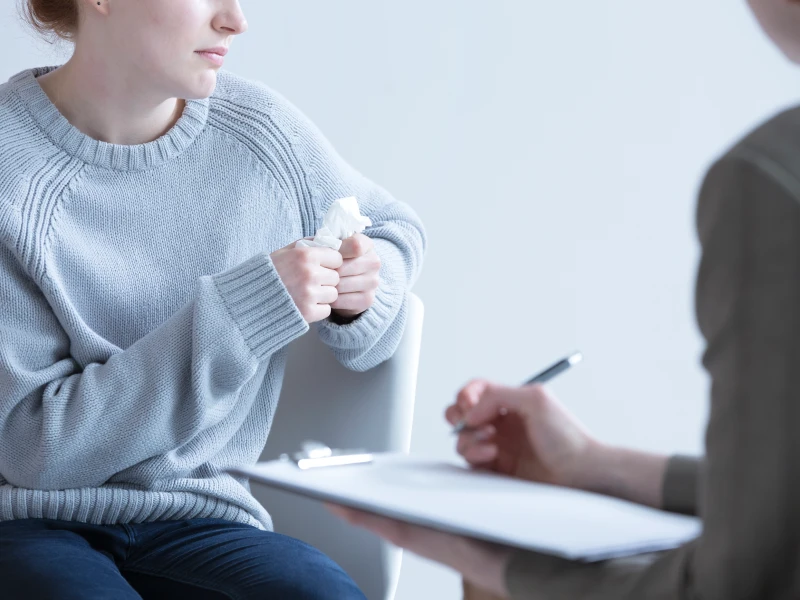
Table of Contents
How To Prevent A Self-Harm Relapse

Written By: Dr. Rasna Kaur Neelam

Clinically Reviewed By: Dr. Don Gasparini
Updated: November 16, 2023
5 min.
Six tips for what to do when you want to self-harm, plus three self-harm warning signs you should know.
Learn more about our Clinical Review Process
Table of Contents
Trigger warning: Self-harm, suicide. If you’re experiencing suicidal thoughts or are in danger of harming yourself, this is a mental health emergency. Contact The Suicide & Crisis Lifeline 24/7 by calling or texting 988.
People with a history of self-harm may feel particularly shameful or guilty about self-harm relapses—instances when they return to patterns of self-harming behaviors they’d previously tried to overcome or manage. However, there’s no shame in struggling with your mental health, and, with the proper support, self-harm relapses can be prevented and overcome. Keep reading to learn more about how to prevent a self-harm relapse and seek support for self-harming.

Healing from self-harm is possible
Charlie Health specializes in virtual care for complex mental health conditions.
What to do when you want to self-harm: tips for preventing a self-harm relapse
For some people, self-injury is an action that is taken once and never again. However, for others, the desire to self-harm drives an individual to harm themselves over and over again, even if they wish to stop. Stopping self-harm is a process that may take time and effort, and, first and foremost, requires professional mental health support. Here are some other tips for preventing a self-harm relapse.
Make a self-harm safety plan
One of the most important ways of stopping self-harm and preventing relapses is to create a self-harm safety plan. A safety plan is a clear set of steps or a plan that you have made in advance that you take when you feel the urge to self-harm. It may also detail who you can call, text, or otherwise communicate with during a situation where you want to self-harm. You can write down the steps ahead of time, so you know exactly what to do in a dangerous situation.
Charlie Health clinicians explain that three key components of safety planning include 1) being aware of when self-harm is likely to happen, 2) removing negative or harmful objects, and 3) replacing these objects with a way to let out negative emotions in a safe way.
Be aware of your triggers
Try to recognize the situations that trigger your desire to self-harm. Are there certain situations, emotions, thought patterns, people, or places that lead to thoughts of self-harm? Keep a journal to identify people, feelings, places, situations, or social media sites that trigger self-harm so you can avoid them or enact your safety plan when it is not possible to avoid them.

Remove harmful objects
Make sure to lock up sharp objects or objects you use to self-harm. Have a friend or loved one take these objects away and place them in an area where you can not easily find them. Make sure harmful objects are taken away from all areas that you can access, especially in areas that are private, such as a bathroom or private bedroom.
Distract yourself
Find an outlet for negative thoughts that you enjoy and can serve as a form of distraction. This may be exercising, calling a friend, going for a walk, drawing, joining an after-school activity to keep yourself distracted, interacting with an animal, taking a shower, meditating, watching a TV show, or more.
Try the TIPP skill
The TIPP skill is a way to replace unhealthy sensations (like self-harm, substance abuse, etc.) with healthy ones. TIPP is an acronym that stands for temperature, intense exercise, paced breathing, and progressive muscle relaxation. These techniques stem from dialectical behavior therapy (DBT), a talk therapy that focuses on regulating emotions and handling distress (among other skills). The four TIPP techniques provide a quick way to regulate your body’s emotions and cope with distress, which can help people handle self-harm urges.

Seek professional help
While these tips may be helpful in preventing a self-harm relapse, they are not a substitute for professional mental health treatment. While not a clinical mental health diagnosis in and of itself, people who self-harm often have underlying mental health conditions, and research shows self-harm can be a strong predictor for a later suicide attempt. Working with a mental health professional can help you process the emotions underlying self-harm urges to promote sustained healing.
Recognizing the warning signs of relapse
Recognizing warning signs of self-harm relapse involves paying attention to various indicators of emotional well-being, mental illness, and self-harm risks. Here are some factors to keep in mind:
Emotional distress
Increased levels of anxiety, depression, or overwhelming emotions may be a warning sign of self-harm relapse. The urge to self-harm often starts as a constellation of negative feelings such as anger, frustration, pain, or depression, according to experts. If a person does not have a way to process emotional pain with positive coping skills or was taught as a child to hide emotions, they may turn to self-harm. Self-harm can then cause feelings of guilt, shame, and negative body issues. Individuals may feel they are “deserving of punishment” and “bad,” feeding the cycle of emotional pain, self-harm, and relapse.
New or increased risk factors
Anyone can self-harm, but, according to the American Psychological Association, some people are more at risk than others. Those who are more likely to self-harm include:
- Adolescents more frequently than children or adults
- Young people who are bullied or rejected by their peers
- Individuals who have a sexual minority status
- Individuals with an eating disorder or body image disorder
- People who have low feelings of self-worth
- Individuals with depression or other mental illness
- Those who have experienced trauma, neglect, or abuse
- Individuals coping with substance abuse
When considering if a young person is at risk for a self-harm relapse, keep in mind these factors, and consider if any of them are newly at play for someone.
Explicit social media content
While the impact of social media on youth mental health is not a black-and-white issue, some research cites self-harm content on social media as a risk factor for self-harming behaviors and self-harm relapses. A 2019 study highlighted the concerning trend of explicit self-harm content on Instagram and its potential impact on young people. Researchers found that almost half (43%) of young participants (ages 18 to 29) had been exposed to such content, with a significant portion unintentionally encountering it. Exposure, whether intentional or accidental, emotionally disturbed a majority of participants (63%), and more than half (59%) considered replicating the self-harming actions they saw. This study demonstrates the importance of maintaining social media boundaries and encouraging healthy social media use among young people with open communication.
Self-harm support at Charlie Health
If you or a young person in your life is struggling with self-harm, Charlie Health is here to help. Remember: with the right support, recovery is possible.
Charlie Health’s virtual Intensive Outpatient Program (IOP) offers more than once-weekly mental health treatment for young people dealing with complex mental health conditions and their families—including those coping with self-harm and co-occurring mental health conditions. Our expert clinicians facilitate group sessions, individual counseling, and family therapy to get to the root of emotional distress and promote long-term self-harm recovery.
Fill out this free assessment to see if Charlie Health is right for you.




